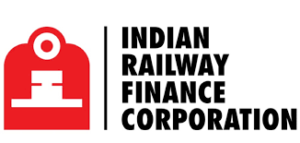Virgin Galactic
7 min read
1. Introduction to Virgin Galactic
Virgin Galactic is a spaceflight company within the Virgin Group. It is developing commercial spacecraft and aims to provide suborbital spaceflights to space tourists and suborbital launches for space science missions. Virgin Galactic plans to provide orbital human spaceflights as well.
The company was founded in 2004 by British billionaire entrepreneur Sir Richard Branson, who had previously founded Virgin Atlantic Airline and the Virgin Group, and who had a long-standing interest in spaceflight. The Virgin Galactic Gateway to Space terminal at Spaceport America is located in New Mexico.
As of 2018, Virgin Galactic has flown two test pilots to the edge of space in their SpaceShipTwo suborbital spacecraft, VSS Unity, reaching an altitude of 51.4 miles (82.7 km) in December 2018. The company conducted its first crewed test flight, also by VSS Unity, on 13 February 2019.
The spaceships are designed to take off and land horizontally from a runway, like an airplane. The Virgin Galactic WhiteKnightTwo carrier aircraft, VMS Eve, takes the spaceship to an altitude of approximately 50,000 feet (15,000 m) before releasing it to glide freely and begin its rocket-powered ascent to space.
With the addition of VSS Unity, Virgin Galactic now has two spaceships in its fleet. The company’s first spaceship, VSS Enterprise, was destroyed in a test flight accident in 2014.
Virgin Galactic has been contracted to fly payloads for NASA and has signed up more than 600 customers who have paid or put down deposits for flights.
2. The History of Virgin Galactic
Virgin Galactic is a spaceflight company within the Virgin Group. It is one of the leading commercial spaceflight providers, offering suborbital and orbital spaceflights to customers including scientists, researchers, and space tourists. The company was founded in 2004 by Sir Richard Branson, who is also the founder of the Virgin Group, and has since launched over 50 successful spaceflights.
Virgin Galactic’s first spaceflight took place in 2008, and since then the company has continued to make significant progress in the development of its technology and infrastructure. In 2012, Virgin Galactic unveiled its SpaceShipTwo (SS2) spacecraft, which is designed to carry six passengers and two pilots on suborbital spaceflights. The company has also been working on developing a new launch system, called LauncherOne, which is designed to send small satellites into orbit.
Virgin Galactic’s ultimate goal is to make spaceflight more accessible and affordable for everyone. The company is currently working on developing a new generation of spacecraft that will be capable of carrying 100 passengers on suborbital spaceflights. Virgin Galactic is also working on developing a hypersonic airliner that would be able to fly passengers from London to New York in just over an hour.
Virgin Galactic’s progress to date has been incredible, and the company is well on its way to achieving its goals. Spaceflight is an exciting and rapidly-growing industry, and Virgin Galactic is at the forefront of this industry.
3. The Future of Virgin Galactic
The future of Virgin Galactic is looking very bright. The company has already made great strides in the commercial spaceflight industry, and it shows no signs of slowing down. In the coming years, Virgin Galactic plans to continue to grow its fleet of spacecraft and launch more commercial flights to space. The company is also working on developing new technology that will allow it to offer even more services to its customers.
One of the most exciting things that Virgin Galactic is working on is the development of a new spaceplane called VSS Unity. This new spacecraft is designed to be more comfortable and efficient than Virgin Galactic’s existing spacecraft. It will also be able to take off and land like an airplane, making it much more accessible to potential customers.
In the future, Virgin Galactic plans to offer a variety of different services to its customers. These services could include everything from space tourism to satellite launches. Virgin Galactic is also working on developing technology that would allow it to mine resources from space, which could be a huge boon for the company.
Overall, the future looks very bright for Virgin Galactic. The company has come a long way in a short amount of time, and it shows no signs of slowing down. In the coming years, Virgin Galactic will continue to grow and expand its operations, and it will likely become a major player in the commercial spaceflight industry.
4. The Technology of Virgin Galactic
The technology of Virgin Galactic is constantly evolving. The company is always looking for new ways to improve their spaceflight capabilities and make the experience more enjoyable for its customers. Here are four of the latest technology advancements from Virgin Galactic:
1. The SpaceShipTwo Unity: The SpaceShipTwo Unity is Virgin Galactic’s latest spacecraft. It is designed to carry six passengers and two pilots on suborbital spaceflights. The Unity is powered by a hybrid rocket motor and can reach a maximum altitude of 51.5 miles (82.7 km).
2. The Virgin Galactic Gateway: The Virgin Galactic Gateway is a new spaceport that is currently under construction in New Mexico, USA. The Gateway will be the home base for Virgin Galactic’s SpaceShipTwo fleet. It will also be used as a training and research facility.
3. The SpaceFlight Simulator: The SpaceFlight Simulator is a new training tool that Virgin Galactic is using to prepare its pilots for spaceflight. The simulator allows pilots to experience the G-forces and other conditions that they will encounter during a space flight.
4. The Virgin Galactic App: The Virgin Galactic App is a new mobile application that will allow customers to book and manage their spaceflight bookings. The app will also provide information about the latest news and events from Virgin Galactic.
5. The Business of Virgin Galactic
Space tourism is a rapidly growing industry, with Virgin Galactic leading the charge. The company was founded in 2004 by Sir Richard Branson with the goal of making space travel accessible to everyone.
Since then, Virgin Galactic has been working hard to make space tourism a reality. The company has built two spacecraft, the VSS Unity and the VSS Enterprise, and has flown dozens of test flights.
The company is now on the verge of commercial operations, with plans to begin flying paying customers in 2020.
Virgin Galactic has already sold tickets for $250,000 per person and has a waiting list of over 700 people.
The company’s ultimate goal is to make space travel affordable for everyone. Virgin Galactic is working on developing new technology that will enable it to fly more people to space more often, and at a lower cost.
The company is also working on expanding its operations to include point-to-point travel, meaning that you could one day fly from New York to London on a Virgin Galactic spacecraft.
There’s no doubt that Virgin Galactic is changing the space industry, and the way we think about travel. The company is paving the way for a new era of space exploration, and we can’t wait to see what they achieve next.
6. The Customers of Virgin Galactic
SpaceShipTwo, the world’s first commercial spaceline, is owned and operated by Virgin Galactic. The company was founded by Sir Richard Branson in 2004 and has since been developing a fleet of spacecraft to take paying customers on suborbital spaceflights.
To date, Virgin Galactic has sold over 700 tickets for SpaceShipTwo flights, which are priced at $250,000 per seat. The company has also secured over $80 million in deposits from would-be astronauts.
Notable customers of Virgin Galactic include Tom Hanks, Ashton Kutcher, and Justin Bieber. In addition, Virgin Galactic has partnered with the United Arab Emirates to train their first astronaut corps.
The first SpaceShipTwo flight is expected to take place in 2020.
7. The Competition of Virgin Galactic
In October 2004, Virgin Group announced the formation of Virgin Galactic, a company created to develop commercial spacecraft. The new company followed on from the success of Virgin’s earlier space ventures, Virgin Atlantic and Virgin Express.
The competition for the commercial space market is heating up, and Virgin Galactic is in the thick of it. The company is up against some well-established players, as well as a number of new entrants.
The main competitors for Virgin Galactic are:
1. Space Exploration Technologies (SpaceX):
SpaceX is one of the leading private spaceflight companies and is owned by billionaire entrepreneur Elon Musk. The company has developed a number of innovative technologies, including reusable rockets, and has a strong track record of delivering on its promises.
2. Blue Origin:
Blue Origin is another private spaceflight company, founded by Amazon.com founder Jeff Bezos. The company is focused on developing reusable rockets and has already achieved some significant milestones, such as landing a rocket back at its launch site.
3. The Boeing Company:
Boeing is a major aerospace company, with a long history in the space industry. The company is currently developing a new spacecraft called the CST-100 Starliner, which is designed to carry astronauts to and from low Earth orbit.
4. Lockheed Martin:
Lockheed Martin is another large aerospace company and a major player in the space industry. The company is currently developing a new spacecraft called the Orion, which is designed for deep space exploration.
5. Sierra Nevada Corporation:
Sierra Nevada Corporation is a private spaceflight company, founded in 1963. The company is developing a spacecraft called the Dream Chaser, which is designed to carry astronauts and cargo to and from low Earth orbit.
6. Bigelow Aerospace:
Bigelow Aerospace is a private company, founded in 1999. The company is developing inflatable space habitats and has already launched two successful test habitats.
7. Nanoracks:
NanoRacks is a private company, founded in 2009. The company is focused on providing commercial access to space and has developed a number of innovative products







